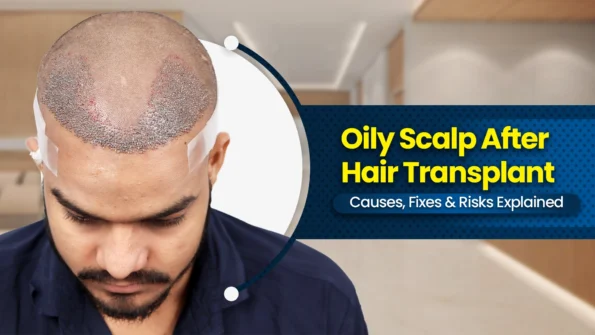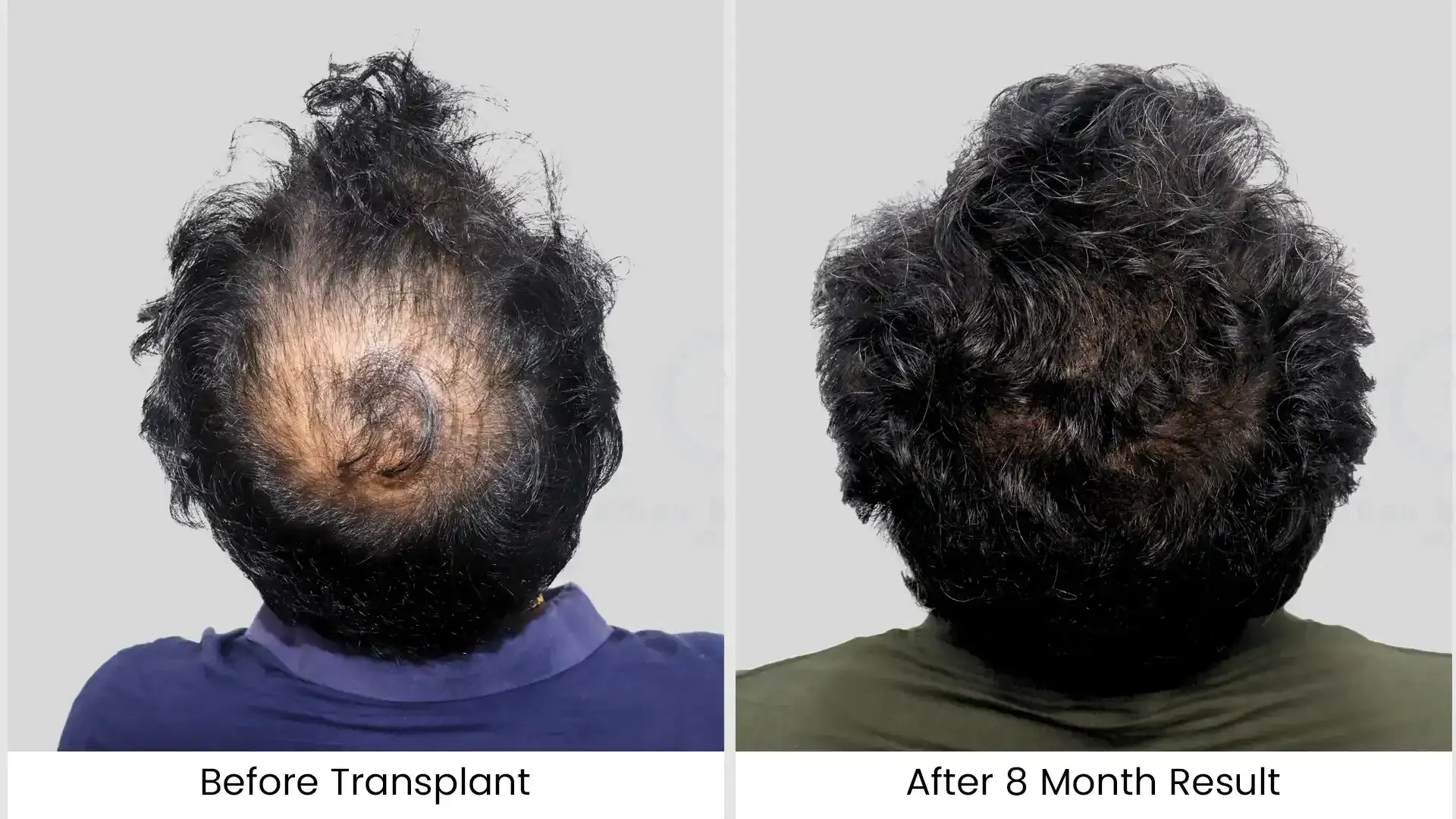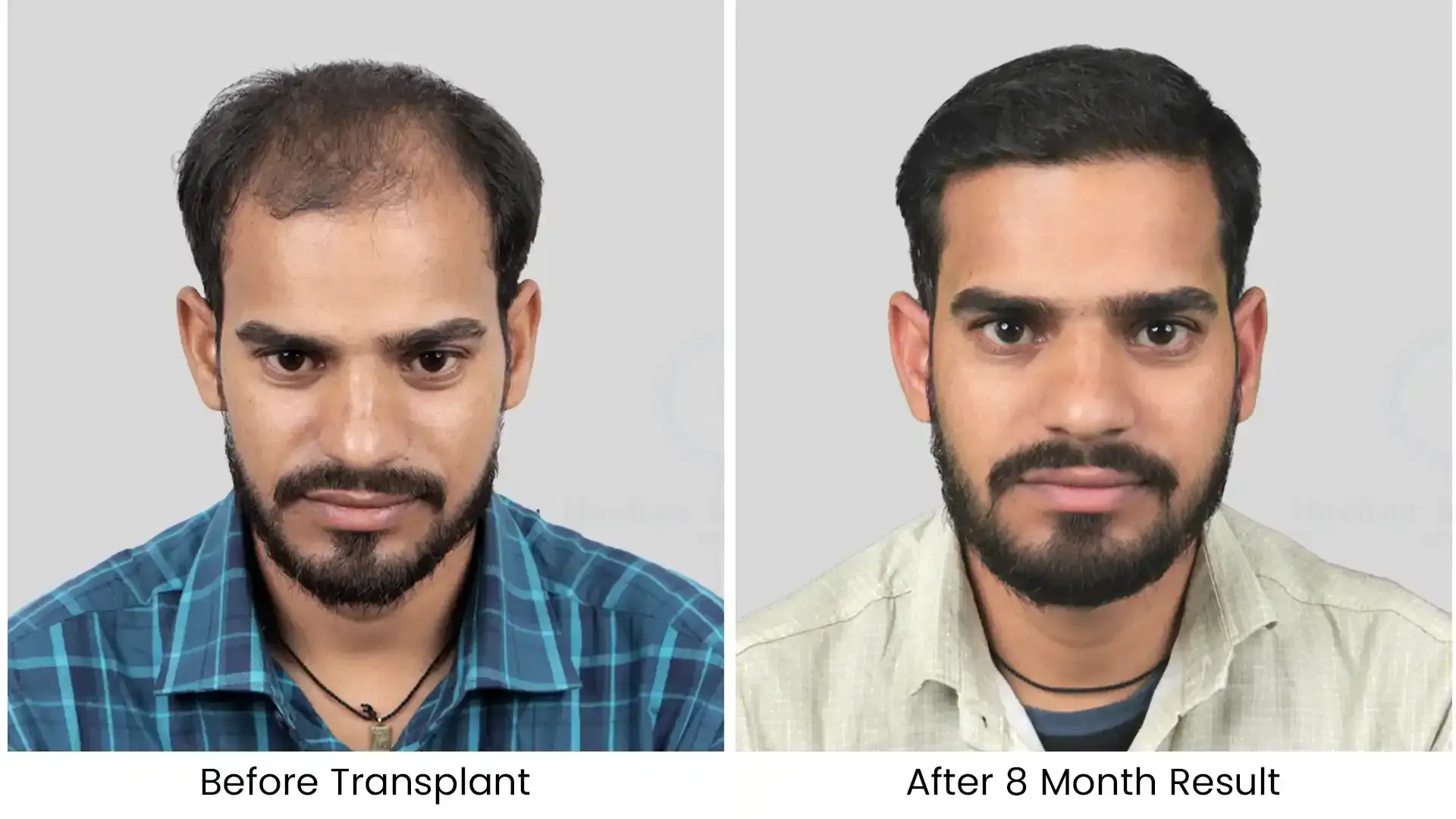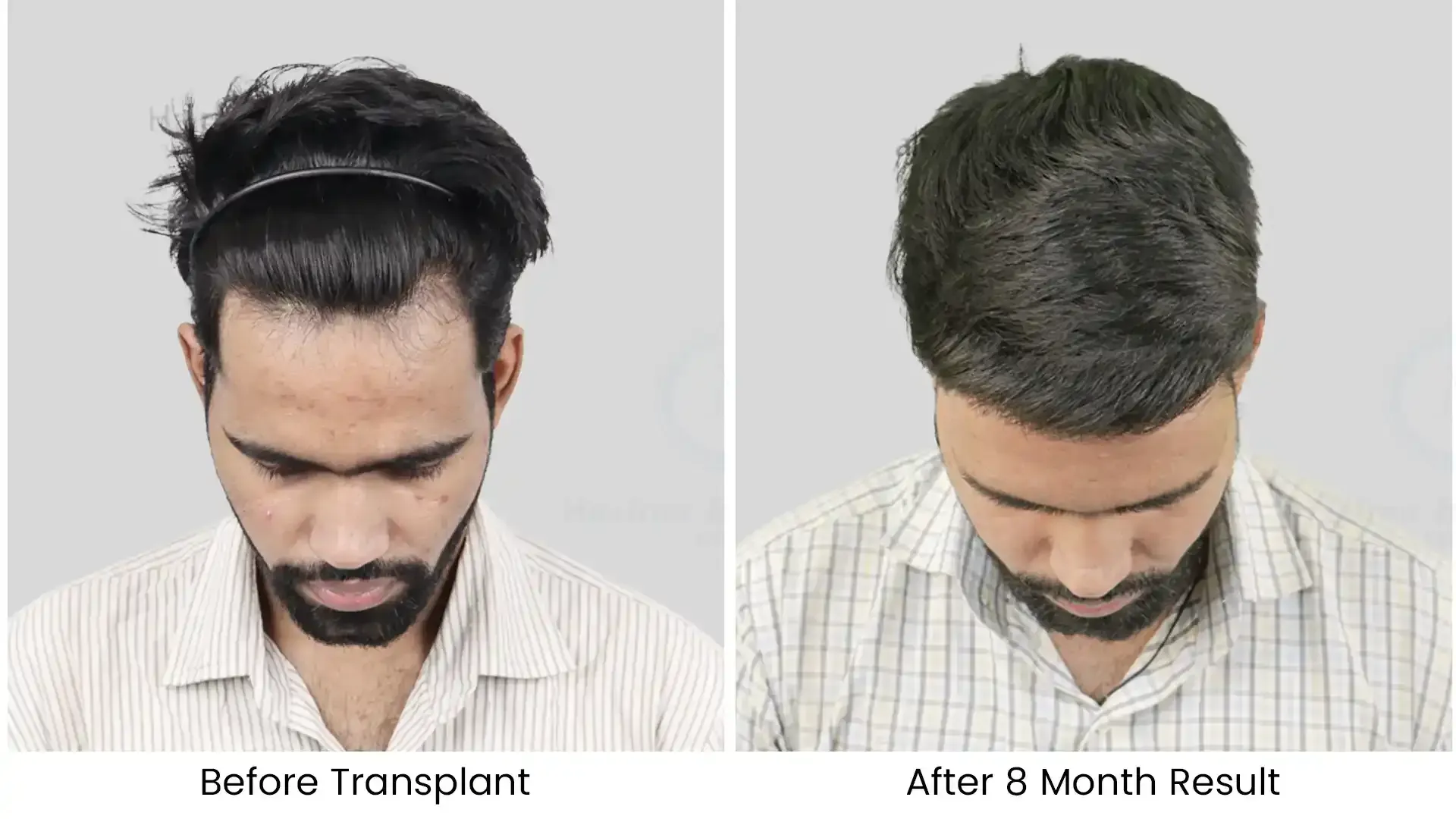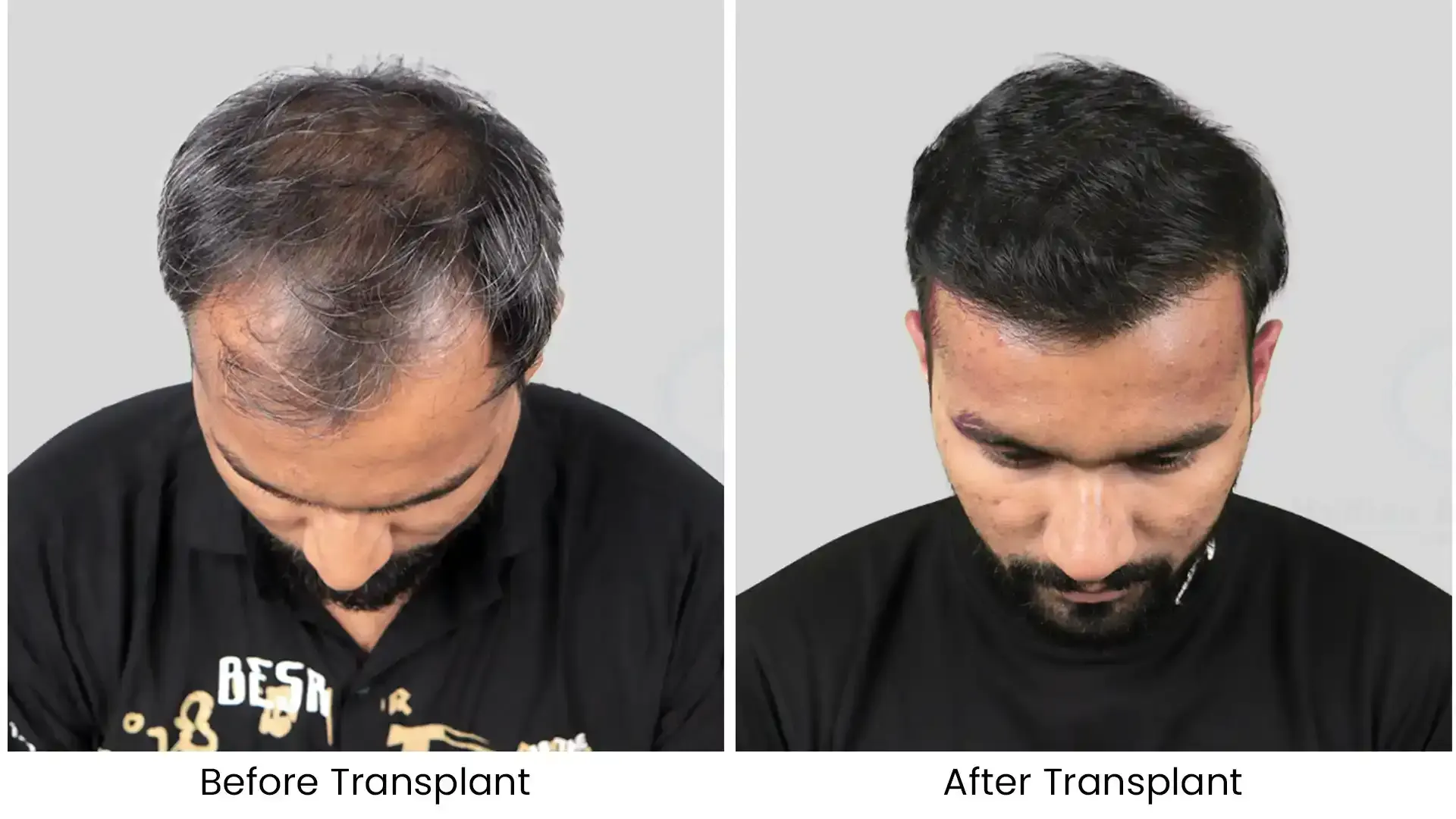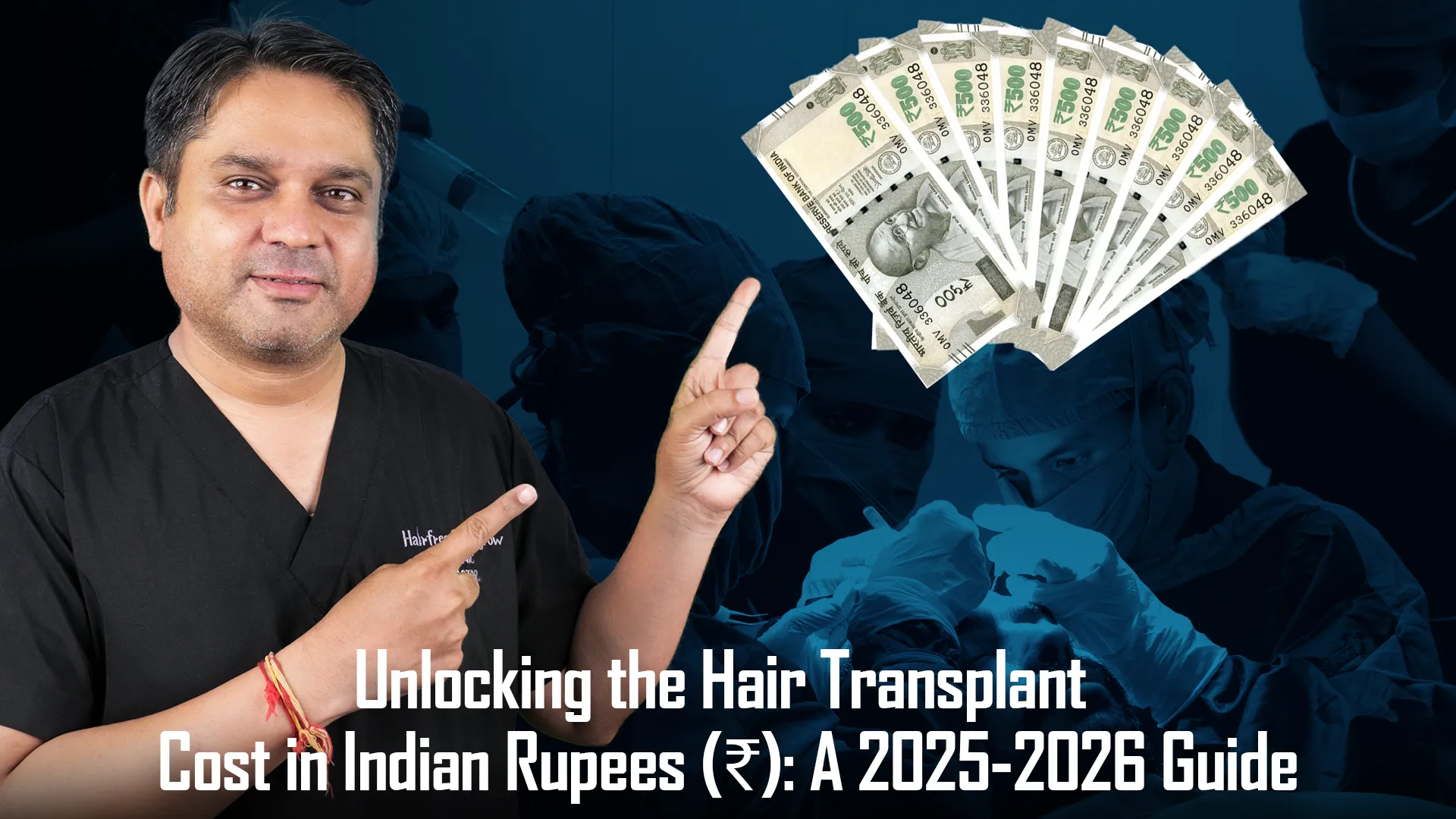A hair transplant is one of the most reliable ways to restore lost hair and confidence. But the recovery journey can sometimes surprise patients with changes they weren’t expecting. One common concern people have is noticing an oily scalp after hair transplant.
At first, this can be alarming. Patients often assume something has gone wrong because they didn’t expect oiliness as a side effect. The truth is that in most cases, it’s normal and temporary. Still, it’s important to understand the reasons behind it, how to manage it, and when to seek medical advice.
This comprehensive guide will cover:
- Why your scalp feels oily after a hair transplant
- The possible causes (medical, lifestyle, and environmental)
- Practical solutions to control scalp oiliness
- When to worry and consult your surgeon
By the end, you’ll feel reassured and equipped to handle this stage of your hair restoration journey confidently.
Why Is My Scalp Oily After a Hair Transplant?
An oily scalp after hair transplant usually happens because of changes your scalp undergoes during surgery and healing. These changes can be temporary responses to the procedure, your lifestyle, or your body’s natural adjustment process. Below are the most common reasons:
1. Surgical Fluid Drainage
During surgery, your doctor injects local anesthesia, sedatives, and a tumescent solution (mostly saline mixed with drugs) into the scalp. This fluid helps lift the skin and makes graft extraction easier.
After the procedure, some of these fluids seep out naturally, mixing with your scalp’s natural oils. This can make your scalp appear greasy. In most cases, this clears up within a few days.
When to worry: If the fluid looks yellow, green, or brown and has a foul smell, it may indicate infection. Consult your surgeon immediately.
2. Serosanguinous Drainage
Another fluid you may notice is serosanguinous drainage. It’s a mix of clear fluid and a small amount of blood, produced as part of the body’s healing process.
Small amounts can leak from the surgical sites, giving your scalp an oily or wet look. This is normal and usually subsides as healing progresses.
3. Sebaceous Glands of Transplanted Grafts
Each transplanted graft comes with its sebaceous gland (oil gland). Once relocated, these glands continue producing sebum. Since the number of active oil glands in the recipient area has now increased, your scalp may feel much oilier than before.
This is actually a sign that your transplanted grafts are alive and functioning.
4. Stress Response
Surgery, recovery, and anxiety about results can cause stress. Stress triggers the release of cortisol, a hormone that stimulates sebaceous glands to produce more oil.
If you notice scalp pimples after a hair transplant, it may be due to clogged pores from excess oil and stress-induced sebum production.
5. Hormonal Imbalance
Although hair transplant surgery itself does not alter hormone levels, underlying hormonal issues (like high testosterone or DHT sensitivity) can cause excessive sebum production. This can make your scalp oily and even worsen conditions like androgenetic alopecia if untreated.
In this case, you should consult a doctor to identify and treat the root cause.
6. Dehydration
Ironically, dehydration can make your scalp look oilier. When your skin lacks hydration, sebaceous glands work overtime to compensate, producing more oil.
That’s why most surgeons advise drinking enough water after surgery—not just to reduce swelling but also to regulate oil production.
7. Poor Diet Choices
Diet plays a big role in skin and scalp health. High sugar, oily foods, processed meals, and excessive dairy can cause hormonal fluctuations that increase sebum production. Alcohol also dehydrates the body, leading to more scalp oiliness.
Switching to a balanced diet with fresh vegetables, fruits, lean protein, and omega-3 fatty acids can significantly improve scalp health.
8. Weather and Environment
Hot and humid climates naturally increase sweating and oil production. If you’ve had your hair transplant in Pune, Hyderabad, or any other humid city in India, you may notice your scalp getting oilier during recovery.
Weather-related oiliness is temporary but can be managed with proper scalp hygiene.
How to Fix an Oily Scalp After Hair Transplant
The good news is that in most cases, an oily scalp after surgery is manageable. Here are effective tips to keep the oiliness under control without harming your transplanted grafts:
Gentle Cleansing
Use only the mild, sulfate-free shampoo recommended by your surgeon. Wash your scalp gently to remove oil, dirt, and fluid buildup. Avoid scrubbing or using harsh shampoos, as these can dislodge grafts.
Stay Hydrated
Drink at least 2–3 liters of water daily. Proper hydration balances oil production and helps flush out surgical fluids.
Eat a Balanced Diet
Incorporate fresh vegetables, fruits, lean protein, nuts, and seeds. Reduce intake of greasy, fried, and sugary foods to prevent excess oil secretion.
Don’t Overwash
Washing your hair too frequently strips away natural oils, causing a rebound effect where your scalp produces even more oil. Stick to your surgeon’s recommended washing schedule.
Use a Scalp Toner (If Advised)
Some dermatologists recommend mild scalp toners to balance oil production. Always consult your doctor before using any new product during recovery.
Manage Stress
Practice yoga, meditation, or deep breathing exercises to keep cortisol levels in check. Lower stress means less sebum production.
Keep Your Environment Clean
Change pillowcases regularly, avoid dirty hats, and keep anything that touches your scalp clean to reduce oil and bacterial buildup.
Avoid Harsh Chemicals
Stay away from hair gels, sprays, or products containing alcohol, as these can irritate your scalp and worsen oiliness.
Is It Dangerous to Have an Oily Scalp After Hair Transplant?
Most of the time, oily scalp after hair transplant is harmless and part of the healing process. However, it can sometimes cause problems if not managed properly.
Potential Risks:
- Excess oil can clog follicles and delay healing.
- Build-up of oil and dirt can cause scalp pimples.
- If combined with infection (redness, swelling, pain, bad-smelling discharge), it can affect your results.
Seek medical help immediately if you notice:
- Persistent redness and inflammation
- Foul-smelling or colored discharge
- Excessive scalp pain
- Severe itching or discomfort
Prompt treatment ensures your transplanted grafts remain healthy.
Conclusion
An oily scalp after a hair transplant is a common and usually temporary side effect. It happens due to surgical fluid drainage, sebaceous gland activity, stress, dehydration, diet, or weather changes. While it’s rarely dangerous, managing it with gentle scalp care, hydration, stress control, and a healthy diet will help you heal faster and protect your transplanted grafts.
If the oiliness is accompanied by unusual symptoms like foul-smelling discharge, severe redness, or pain, consult your hair transplant surgeon right away.
Remember: Patience and proper care are key during recovery. With time, your scalp will normalize, and you’ll soon start enjoying the results of your hair transplant with confidence.
FAQ on Oily Scalp After Hair Transplant
- Is it normal to have an oily scalp after a hair transplant?
Yes, it’s completely normal to experience an oily scalp after a hair transplant. This happens due to surgical fluid drainage, sebaceous glands in transplanted grafts, stress, or even weather conditions. In most cases, it’s temporary and improves with proper scalp care.
- How long does scalp oiliness last after a hair transplant?
Scalp oiliness usually lasts for a few days to a few weeks after surgery. As your scalp heals and your sebaceous glands adjust, the oil production normalizes. If it persists for months, consult your surgeon to rule out other causes like hormonal imbalance or skin conditions.
- Can an oily scalp damage my hair transplant results?
Mild oiliness will not damage your results. However, excessive oil combined with poor scalp hygiene can clog follicles and slow healing. If you notice scalp pimples, redness, or unusual discharge, seek medical advice to protect your transplanted grafts.
- How can I reduce an oily scalp after hair transplant?
You can manage oiliness by gently washing with a mild shampoo, staying hydrated, eating a balanced diet, and avoiding harsh hair products. Stress management and proper aftercare (as recommended by your surgeon) also help regulate oil production.
- When should I worry about an oily scalp after hair transplant?
If oiliness is accompanied by symptoms like foul-smelling discharge, persistent redness, swelling, pain, or severe itching, it could indicate an infection. In such cases, contact your hair transplant surgeon immediately for treatment.
Written By
MBBS, DVD (Skin & VD)
Dr. Ankit Jain is a trusted hair restoration specialist with expertise in managing Oily Scalp After Hair Transplant. He provides evidence-based guidance to promote scalp healing, reduce excess oil, and support natural hair growth, ensuring patients achieve long-lasting, healthy, and successful transplant results.
Disclaimer
We’ve made all possible efforts to ensure that the information provided here is accurate, up-to-date and complete, however, it should not be treated as a substitute for professional medical advice, diagnosis or treatment. See Detailed Disclaimers Here.

